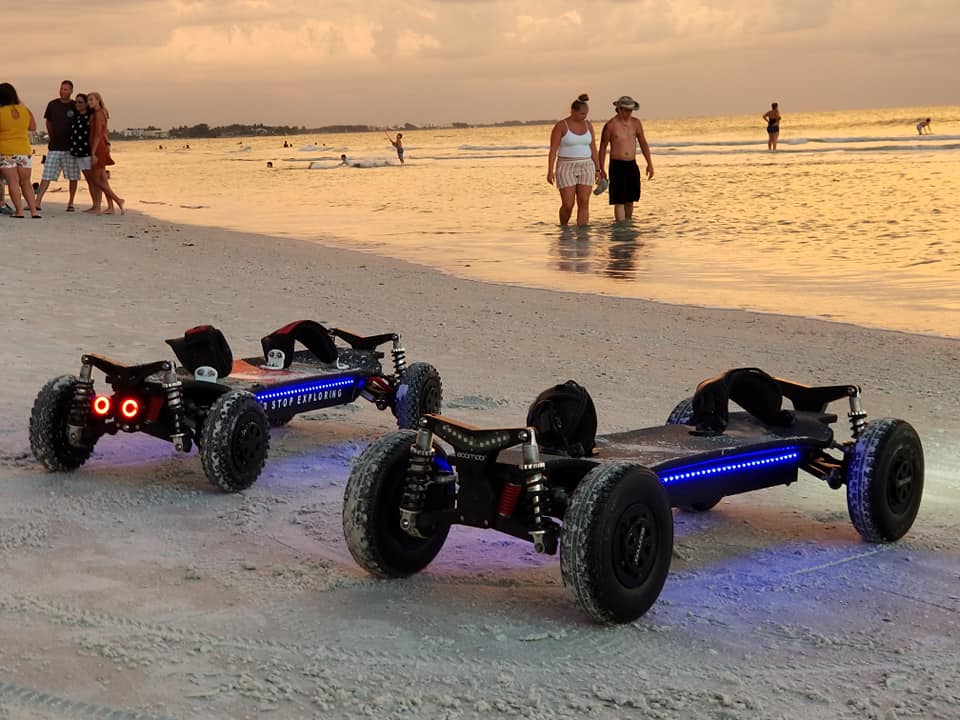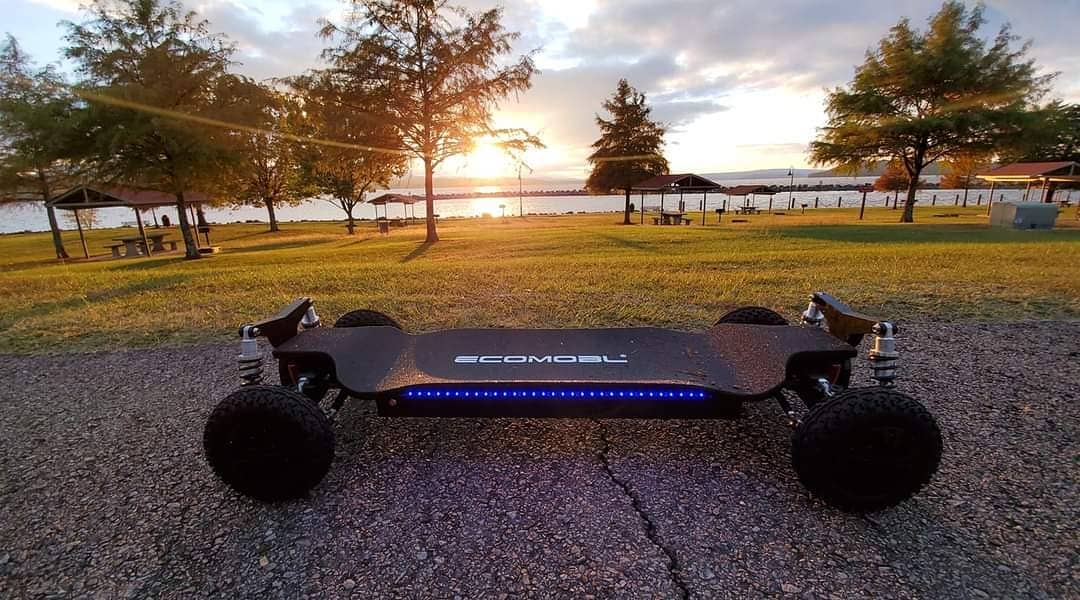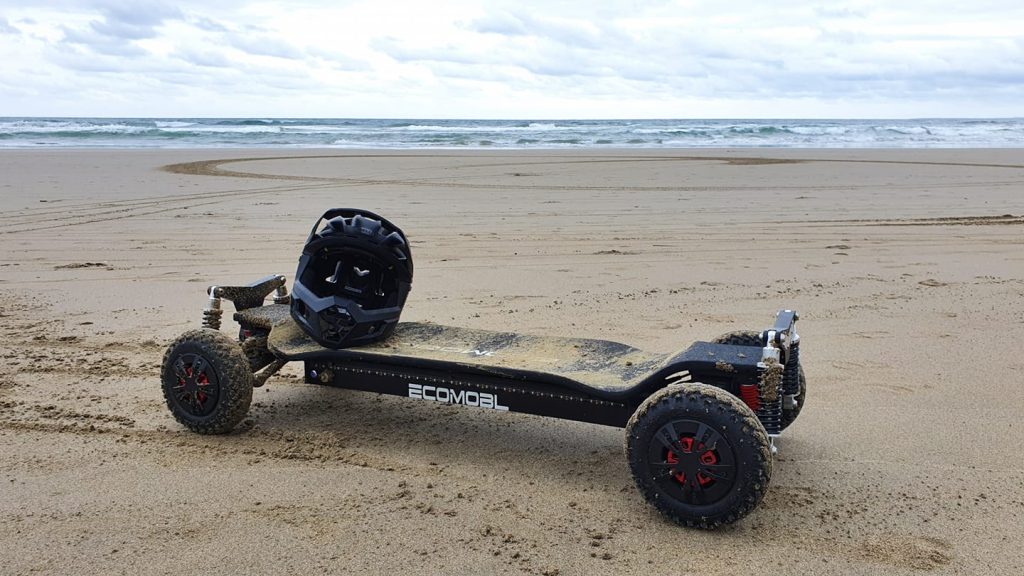Electric skateboarding brings speed, excitement, and freedom, but with that thrill also comes the risk of injury and the importance of injury recovery. Carving through urban landscapes or off-road terrain, there is always the potential for mishaps. This beginner-friendly guide offers a complete roadmap for riders recovering from injuries.
From recognizing common electric skateboard injuries to regaining mental focus, every stage of healing is covered with care. Backed by smart tips and the rider-first mindset, this guide empowers you to protect your body, speed up recovery, and return to skating with more confidence than ever.

Common Electric Skateboard Injuries and Their Symptoms
Before recovery begins, it’s essential to understand the injuries electric skateboarders face most often. From fractures to concussions, knowing the signs and causes of these common injuries can help riders respond faster, heal smarter, and prevent long-term setbacks.
| Injury Type | Common Causes | Key Symptoms | Notes / Tips |
| Wrist Fracture | Falling forward, landing on palms | – Sharp wrist pain
– Swelling – Difficulty rotating |
Most common injury. Use wrist guards for protection. |
| Ankle Fracture/Sprain | Rolling ankle during landing or dismount | – Swelling
– Pain when walking – Bruising |
Good footwear + stable stance helps prevent this. |
| Concussion | Impact to the head or sudden jolt | – Headache
– Dizziness – Confusion or memory loss |
Symptoms may appear hours later. Seek medical help. |
| Sprains/Strains | Overextension, sudden twists | – Joint pain
– Limited movement – Muscle spasms |
Warm up before riding; avoid overexertion. |
| Contusions (Bruises) | Blunt impact from a fall | – Swollen, tender area
– Discoloration |
Use padding when riding off-road or at higher speeds. |
| Road Rash/Abrasions | Sliding on pavement after a fall | – Skin scrapes
– Bleeding or exposed tissue |
Clean wound properly; wear gloves and protective gear. |
Immediate Response to Electric Skateboard Injuries
While recognizing symptoms is only half the battle, what truly determines the severity of an injury isn’t just how hard you hit the ground; it’s how quickly and effectively you respond afterward. Immediate care can mean the difference between a quick recovery and a long-term setback.
First Aid Essentials for Electric Skateboarders
Electric skateboarders ride fast, fall hard, and often hit remote paths where help isn’t always nearby. That’s why having a compact, portable first aid kit tailored for skaters is a no-brainer.
Here’s what every rider should consider packing:
- Sterile gauze and bandages for treating road rash and cuts
- Antiseptic wipes or spray to prevent infection on abrasions
- Elastic bandages for joint support after sprains
- Instant cold packs to reduce swelling quickly
- Tweezers for removing gravel or debris from wounds
- Disposable gloves for clean handling
- Pain relief meds (like ibuprofen) to manage swelling and discomfort
While first aid can’t replace professional care, it can stabilize a situation long enough to make safe decisions about what to do next.
When to Seek Emergency Medical Care
Not every fall needs an ER visit, but some absolutely do. If you’re uncertain whether an injury warrants professional help, look for these red flags:
- Loss of consciousness or prolonged confusion (signs of a concussion)
- Bone visibly out of place, or an inability to move a limb
- Heavy bleeding that doesn’t stop with pressure
- Deep abrasions with embedded debris
- Severe pain while breathing or signs of internal injury
In these cases, continuing to ride or “toughing it out” can turn a bad situation into a dangerous one. If you’re riding solo, always carry a fully charged phone and share your location or route with someone beforehand.
Creating a Personal Injury Action Plan
Skateboard crashes are unpredictable, but your response shouldn’t be. Crafting a personal injury action plan helps reduce panic and boosts clarity when you, or someone in your group, gets hurt.
Here’s what a smart rider action plan includes:
- Designated emergency contact stored in your phone under ICE (In Case of Emergency)
- Familiarity with local clinics or hospitals near your common riding routes
- A written or memorized list of known allergies or medical conditions
- Basic first aid training, especially how to manage bleeding, immobilize limbs, and recognize concussions
- A checklist of gear and first aid items to carry on long rides
With this kind of preparation, you’re not just riding, you’re riding responsibly.

Pain Management and Recovery Acceleration
Managing that discomfort isn’t just about easing the ache; it’s about unlocking the body’s ability to heal faster and more efficiently.
Ice, Compression, Elevation: The RICE Method Updated
The classic RICE protocol, Rest, Ice, Compression, and Elevation, has been a first-line pain and swelling reducer for decades.
And in detail, this means:
- Protection: Support injured areas with braces or wraps to avoid stress
- Cold therapy: Apply ice for 15–20 minutes at intervals during the first 48 hours
- Compression wraps: Reduce swelling and support joints like ankles or wrists
- Elevation: Keep injured limbs raised above heart level whenever possible
This method reduces acute inflammation and creates the right environment for tissue repair, especially effective after hard falls or joint trauma.
Over-the-Counter vs. Prescription Pain Relief Options
When the ache persists, many turn to painkillers. But not all meds are created equal.
- Over-the-counter (OTC) medications like ibuprofen or acetaminophen can help manage pain and swelling for minor to moderate injuries. However, frequent or high-dose use should be approached with caution, especially in high-frequency recovery periods.
- Prescription medications, such as muscle relaxants or stronger NSAIDs, may be used under medical supervision, usually in cases of severe injury or post-surgical recovery.
Alternative Pain Management Techniques
Not all problems need to be solved with pills. Alternative techniques can be powerful allies in recovery as well:
- Foam rolling and myofascial release to reduce muscle tension
- Dry needling or acupuncture for chronic pain or nerve issues
- Infrared therapy or contrast baths to stimulate circulation and reduce swelling
- Guided breathing or meditation to manage pain perception and stress response
- TENS units (transcutaneous electrical nerve stimulation) for targeted pain relief
These non-invasive options are especially useful when pain lingers beyond the expected healing time or when trying to maintain physical activity during recovery.
Mental Health Aspects of Injury Recovery
The term “injury recovery” reminds people of the healing bones, fading bruises, and cessation of bleeding. What many people might ignore is that the recovery is not merely physical, it’s also about the boarder’s mental health from the “off-board depression”.
Coping with Limited Mobility
Suddenly needing help walking, carrying things, or even falling asleep can be frustrating. This change in freedom affects all skaters, from casual cruisers to off-road champions.
To handle this:
- Acknowledge the frustration without feeding it. Feel it, then refocus.
- Adjust your routine rather than abandoning it; replace rides with books, breathwork, or journaling.
- Stay connected to skate communities online or in person, even when you can’t ride.
Keeping Motivated With Long-Term Recovery
The longer the recovery, the harder it gets with the returning pain and increasing self-doubt. This is when you should practice motivation as daily training.
Strategies that help:
- Set micro-goals (e.g., improving ankle flexibility by 10° or walking unaided for 5 minutes).
- Track your progress visually, recovery journals, or mobile apps can turn small wins into fuel.
- Visualize riding again, picture the board under your feet, the road ahead, the wind on your face.
Staying goal-oriented helps prevent negative loops, especially during slow recoveries like ligament tears or concussions, where rest can feel like stagnation. Instead, turn each day into an active choice to get better.
When to Resume Skating: Psychological Readiness
Physical healing is measurable. But mental readiness? That’s trickier. You might be cleared to ride. But fear, hesitation, or past trauma may linger.
Ask yourself:
- Do I trust my body again?
- Do I feel in control of my board?
- Do I know now how to ride electric skateboards safely?
Gradual exposure can help rebuild confidence. Start with static drills, balance work, and then slow cruising. If anxiety or fear becomes overwhelming, it’s okay to seek professional help. Just like physical gear protects your body, caring for your mental health is essential to staying safe, balanced, and motivated on the board.

Gradual Return to Electric Skateboarding
Even after you’ve regained mobility, strength, and balance, psychological preparation is still the keeper of recovery and riding. It doesn’t just flip a switch overnight; that confidence is pieced back together, layer upon layer, with one safe push-off at a time, each carvable, controlled stop. Having your electric skateboard back underneath your feet should feel empowering, not anxious. Here is how this section presents an orderly plan to re-enter, which protects your mind and your body.
Gradual Return: Step-by-Step Plan
Jumping back into full-speed carving or trail bombing is a fast track to reinjury. Instead, adopt a phased return that honors your body’s recovery while gradually testing your limits.
Here’s a smart, adaptable structure:
- Week 1–2: Board familiarity, static balance drills, stance adjustment, foot pressure control
- Week 3–4: Low-speed cruising on smooth terrain, gentle turns, controlled braking
- Week 5–6: Introduce uneven surfaces, light inclines, and increased riding time
- Week 7+: Resume technical terrain, speed training, or advanced tricks, only if pain-free and confident
This development can be adaptive by type of injury, but the concept is the same: create trust in your movement before demanding performance from it.
Technique Changes to Prevent Re-injury
Once injured, your riding style must be altered. Minor adjustments in riding form can greatly reduce stress to healing joints or muscles. These technique modifications are especially important for electric skateboard safety.
Examples include:
- Lowering stance slightly to increase stability and reduce ankle strain
- Shifting weight evenly across both feet to prevent overloading one side
- Using controlled carving instead of sharp pivot turns to minimize joint stress
- Soft throttle control, progressive acceleration over jerky bursts
If your injury was linked to loss of balance or poor posture, consider working with a skate coach or rehab specialist to fine-tune your riding mechanics.
Protective Gear Adaptations Based on Past Injuries
Your gear should evolve with your experience and your history. Previous injuries are indicators, not weaknesses. Use them to reinforce your setup.
Some smart post-recovery upgrades:
- Wrist guards with palm sliders after fractures or sprains
- High-cut ankle support boots for post-ligament injuries
- Full-face helmets are recommended if you’ve suffered a concussion or ride at high speeds
- Padded shorts or hip guards for riders recovering from tailbone or hip injuries
- Integrated back protection for downhill or off-road skaters
Ecomobl riders know that gear isn’t just for beginners, it’s for those who’ve been there, crashed hard, and come back stronger. Your gear tells your story, and each upgrade is a line of defense that says, “I’ve learned and I’m not going down the same way twice.”
Final Words
Electric skateboard injury recovery isn’t just about bones, muscles, or balance; it’s about resilience. It’s about learning how to pause without giving up, how to heal without losing heart, and how to rebuild both strength and confidence, one ride at a time.
Every scar, every setback, and every slow breath taken in pain is part of a deeper story, of a rider who chose to get back up. Every step matters because electric skateboarding isn’t just motion, it’s expression, freedom, and connection. Take care of yourself with this guide. And when you’re ready, ride again, stronger, wiser, and more grounded than ever.
Frequently Asked Questions
1. What safety gear is most effective in reducing serious injuries?
The most effective safety gear includes a certified helmet, wrist guards, elbow pads, knee pads, and proper shoes with good grip. For electric skateboards, full-face helmets and padded jackets are also recommended, especially when riding at higher speeds or off-road.
2. Can stretching and warm-ups help prevent skateboarding injuries?
Yes, stretching and warm-ups improve flexibility, loosen muscles, and increase blood flow, which helps reduce the risk of strains, sprains, and muscle injuries. Simple dynamic stretches and balance exercises before riding can make a big difference in injury prevention.
3. How long does it usually take to recover from an electric skateboard injury?
Recovery time depends on the type and severity of the injury. Minor cuts and bruises may heal in a few days, while sprains or fractures can take weeks to months. With proper rest, rehabilitation, and medical care, most riders gradually return to full activity within 4–12 weeks.
4. How do I know if I’m pushing too hard during rehabilitation?
If you feel sharp pain, swelling, increased discomfort, or fatigue that doesn’t improve with rest, it’s a sign you may be overdoing it. Rehabilitation should challenge your body but not cause intense pain. Always listen to your body and progress slowly, ideally under guidance from a medical professional or physiotherapist.




